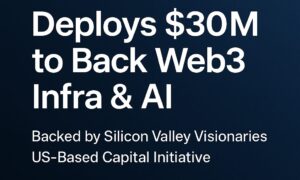Posts By Usman Ghani
-

 12Technology
12TechnologyAI Companions and the Future of Emotional Tech: How AIGirlfriends.ai Is Leading the Way
AI Companions and the Future of Emotional Tech: How AIGirlfriends.ai Is Leading the Way In the age of hyperconnectivity, one of the...
-

 45Latest News
45Latest NewsStart Your Career with a Cycling Coach Certification
Are you passionate about cycling and want to turn that passion into a fulfilling career? A cycling coach certification could be your...
-

 41Technology
41TechnologyHow Artisanal Lighting is Merging Craftsmanship with Smart Home Technology
In an era dominated by sleek smart devices and automated systems, homeowners are increasingly seeking ways to integrate technology with warmth, artistry,...
-

 59Technology
59TechnologyVital Translate Buds Complaints Explained (2025 Consumer Reports) Here’s What You Should Know Before Buying
Vital Translate Buds are innovative wireless earbuds engineered to simplify global communication by offering real-time voice translation. Designed to translate conversations across...
-

 89Business news
89Business newsWhere to Buy Cannabis in Mexico: A Guide for American Travelers
The use of cannabis has become an increasingly significant topic in legal and cultural discussions worldwide. For American travelers heading to Mexico,...
-

 114Business news
114Business newsHire Talented Virtual Assistants to Scale Your Business Faster
Do you feel overwhelmed by daily tasks that slow your business down? You’re not alone-and there’s a smart solution. Hiring talented virtual...
-

 113HealthTech
113HealthTechThe Memory Breath Complaints Investigated: Can This Audio Program Really Support Brain Health? (Detailed Analysis)
Developed by a team of leading neuroscientists, The Memory Breath is a digital video guide based on a groundbreaking, Nobel Prize-winning discovery...
-

 87Business news
87Business newsThe Future of Credit Insurance in the Digital Age
In today’s fast-changing business world, how can companies protect themselves from financial losses when customers don’t pay? Credit insurance is one answer,...
-

 84Business news
84Business newsExpanding Your HR Strategies: Leveraging International Markets
Expanding your HR strategies to include international markets can bring big advantages. You get access to new talent, fresh ideas, and different...
-

 81HealthTech
81HealthTechNuubu Detox Foot Patches And Consumer Reports: Is This A Safe And Natural Option For Body Detoxification? Side Effects And Complaints Included!
We humans are exposed to toxins through the environment whenever we go out. Spending so little time outside can make us feel...
-

 79How To
79How ToHow Remanufactured Transmissions Save You Money
When your transmission starts slipping, making strange noises, or outright fails, the dread usually isn’t just mechanical, it’s financial. A faulty transmission...
-

 86Latest News
86Latest NewsTop 9 Reasons to Buy Tablets in Bulk for Business or School
In today’s digital age, the integration of technology in education and business has become non-negotiable. Schools and businesses alike face a pressing...
-

 94Technology
94TechnologyHow to Extend the Lifespan of Your Electronics
Ever wonder why your phone slows down or your laptop dies sooner than expected? In today’s world, electronics are part of our...
-

 116Business news
116Business newsMitolyn Complaints Investigated 2025: Buyers Reveal Unexpected Insights About Side Effects and Effectiveness!
The global rise in obesity has become a significant health concern and is driven by several key factors. A major reason is...
-

 172Business news
172Business newsEnergy Revolution System (Consumer Reports And Complaints) Is This DIY Home Generator Kit Worth Your Investment?
With electricity prices climbing steadily, managing energy costs has become a growing concern for households and businesses. Traditional power sources are not...
-

 105Business news
105Business newsBillionaire Brain Wave Exposed: Is This 7-Minute Manifestation Audio Worth Trying? User Insights, Benefits & Complaints
Billionaire Brain Wave is a wealth manifestation program that has been receiving much traction lately. This program is for those seeking personal...
-

 93Latest News
93Latest NewsDiscovering Affordable Stairlift Solutions with stairliftcosts.co.uk
When it comes to enhancing accessibility and safety in your home, the importance of a reliable stairlift cannot be overstated. Whether you’re...
-

 127Business news
127Business newsWhy choose a free zone for business setup in Dubai
Setting up a business in Dubai has become increasingly attractive to entrepreneurs from around the world and one of the most popular...
-

 101Business news
101Business newsBenefits of Mainland Business Setup in Dubai
Dubai continues to attract entrepreneurs and companies from around the world, and choosing a mainland setup offers clear advantages. While free zones...


















